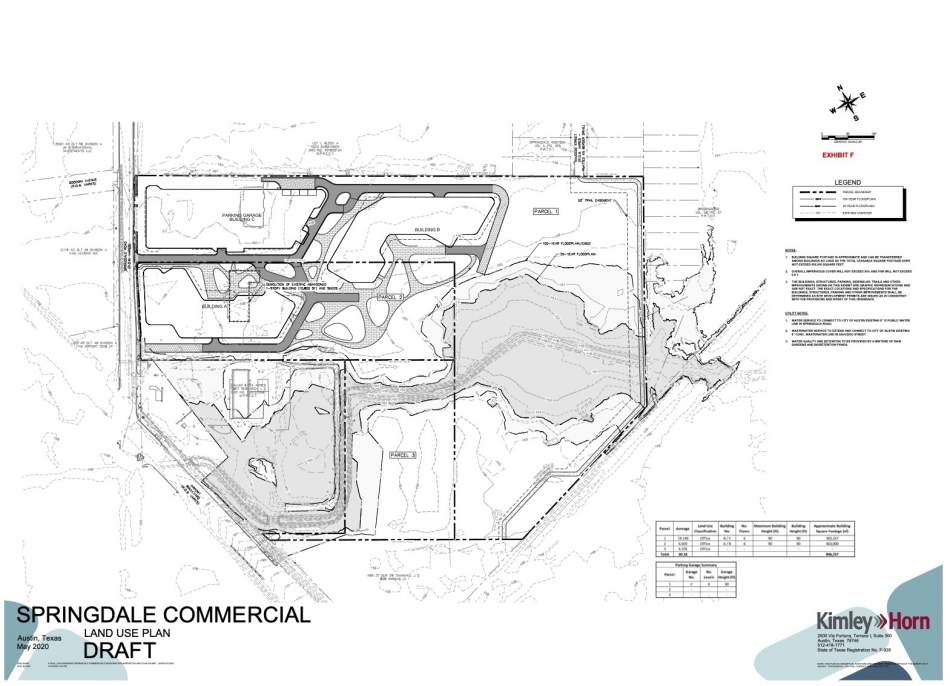An 800,000-square-foot office complex proposed for a storied brownfield site in East Austin got a thumbs-up on first reading from the Austin City Council at its regular meeting on April 22. Developer Jay Paul seeks final council approval for rezoning that would allow more building height for the Springdale Green project, planned for land formerly known as the “tank farm” at 1011 and 1017 Springdale Road.
It was not the proposed height allowances that dominated discussion at the meeting—although the Springdale-Airport Neighborhood Association did, in the context of its overall support of the project, oppose a potential increase of up to 33 feet higher than the currently allowed 60 feet. Rather, it was a topic that has come to the fore recently in the council’s conversations around downtown density bonuses that became the focus of the Springdale Green proposal as well: the level of community benefits the neighborhood will receive in exchange.
Because the 30.18 acres of land at the Springdale Green site was for 35 years home to fuel and chemical storage tank facilities and has been remediated to commercial standards only, the Texas Commission on Environmental Quality will not allow residential uses (which include public parks in this case), said Michael Whellen of Armbrust and Brown, the firm representing the developer. In addition, because a large portion of the property is located in a floodplain, plans are for the buildings to be located along Springdale Road, with impervious cover limited to 50 percent of the site.
 Site plan submitted for Springdale Green projectKimley Horn via City of Austin
Site plan submitted for Springdale Green projectKimley Horn via City of Austin
If the development moves forward, it will donate $700,000 to the city's affordable housing fund, along with $250,000 to a nearby urban trail project, $75,000 for property tax assistance to East Austin residents, and more than $400,000 to address flooding in the adjacent watershed. Daniel Woodroffe, whose firm DWG is the landscape architect on the project, presented details on how the landscape design will include site-enhancing features beyond what is required, including restoring the site’s “natural beauty and biodiversity.”
The city requires only the payment into the affordable housing fund for the approved height increase—although, as Councilmember Ann Kitchen confirmed with Whellen during the discussion, the general public won’t have access to the improved grounds—at least not in any officially sanctioned way, such as a public park.
The city Planning Commission voted in March to support PUD zoning for the tract, and the city’s Environmental Commission also approved the project. The Govalle/Johnston Terrace Neighborhood Plan Contact Team joined the Springdale-Airport Neighborhood Association in expressing concerns about the precedent-setting height for the neighborhood.
The rezoning request will be on the council’s May 20 agenda for further consideration.







